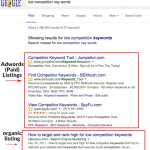Four typical SEO problems with Shopify and how to repair them
30-second summary:
While Shopify is among the most popular platforms for ecommerce services, the CMS has a variety of issues that can be problematic for SEO
Best SEO practices typically use to all CMS platforms, but Shopify has several inbuilt features that can not be customized, indicating some products need more special workaroundsEdward Coram-James discusses concerns such as restricted URL structure and replicate material, providing suggestions on how to fight Shopify's drawbacks in these locations
Shopify is the most widely-used ecommerce platform, making it simpler than ever prior to for organizations to sell their stock online. Its user friendly CMS has made it especially advantageous for smaller sized merchants throughout the pandemic, enabling them to claw back around 94% of what would have otherwise been lost sales.Just like any new website, a fresh Shopify store will require a great deal of effort on the part of its web designer to establish the required presence for users to discover the website, not to mention convert into consumers. And just like any CMS, there are a few SEO hurdles that keep owners will need to clear to guarantee that their site discovers its audience efficiently. Some of these difficulties are more deep-rooted than others, so we've broken down four of the most common SEO issues on Shopify and how you can repair them for your webstore.

1. Restricted URL structure
In much the same manner in which WordPress splits material between posts and pages, Shopify's CMS permits you to divide your product listings into two primary categories-- items and collections-- together with more basic posts, pages, and blogs. Producing a brand-new product on Shopify permits you to note the private products you have for sale, while collections give you the chances to bring your diverse products together and sort them into easily-searched categories.
The problem many people have with this enforced system of organizing material is that Shopify also implements an established hierarchical structure with minimal modification alternatives. The subfolders/ product and/ collection must be consisted of in the URL of every brand-new item or collection you submit.
Despite it being a huge bone of contention with its users, Shopify has yet to resolve this and there is no option presently. As a result, you will require to be incredibly careful with the URLs slug (the only part that can be customized). Ensure you are utilizing the ideal keywords in the slug and classify your posts smartly to provide your items the very best possibility of being discovered.
2. Automatically generated duplicate material

In this instance, however, Shopify has enabled repairs, though it does involve modifying code in the back end of your store's theme. Following these directions will advise your Shopify site's collections pages to internally connect just to the canonical/ item/ URLs.
3. No trailing slash redirect
Another of Shopify's duplicate content concerns relates to the routing slash, which is basically a '/' at the end of the URL utilized to mark a directory site. Google treats URLs with and without a routing slash as special pages. By default, Shopify automatically ends URLs without a routing slash, however variations of the very same URL with a tracking slash are available to both users and online search engine. This can typically be prevented by implementing a site-wide tracking slash redirect through the website's htaccess file, but Shopify does not allow access to the htaccess file

Shopify instead recommends that web designers utilize canonical tags to notify Google which variation of each page is preferred for indexing. As the only repair readily available up until now, it will have to do, but it's far from perfect and typically results in data inbound digital marketing attribution problems in Google Analytics and other tracking software.
4. No control over the site's robots.txt file.
Beyond the CMS forcing users to produce replicate versions of pages against their will, Shopify likewise prevents webmasters from having the ability to make manual edits to their store's robots.txt file. Obviously, Shopify sees this as a perk, looking after the pesky technical SEO concerns on your behalf. However, when products head out of stock or collections get pulled, you can neither noindex nor nofollow the redundant pages left.
In this circumstances, you have the ability to modify the theme of your store, integrating meta robotics tags into the section of each pertinent page. Shopify has actually produced a step-by-step guide on how to conceal redundant pages from search here.